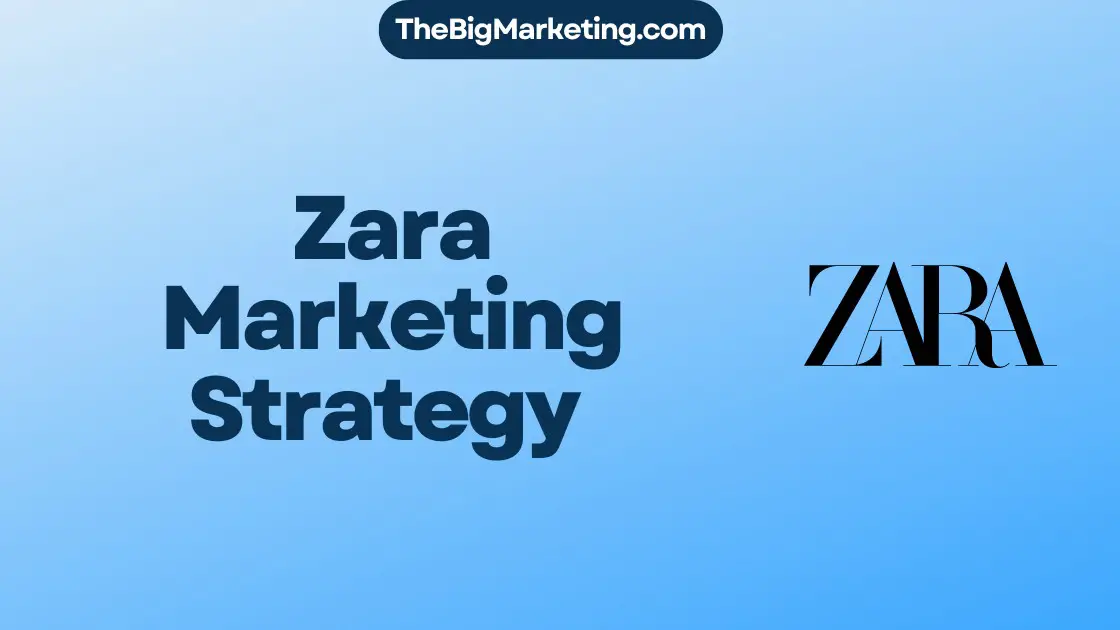Givenchy, a renowned French fashion house, has established itself as a leader in the luxury fashion industry through its innovative marketing strategies. By focusing on luxury fashion branding, digital marketing tactics, brand positioning, and consumer engagement, Givenchy has achieved a unique and influential presence in the market.
With its target audience ranging from women aged 22 to 45 years old, Givenchy’s brand positioning appeals to a diverse age demographic. Through clear and artistic brand messaging, Givenchy establishes itself as a high-end designer brand in the luxury fashion market.
To reach its target audience, Givenchy utilizes a combination of print, digital, and outdoor advertising. The brand also leverages social media platforms such as Instagram, Facebook, and YouTube to foster strong connections with consumers. Email marketing serves as another strategic tactic for engaging with consumers while maintaining a low spam rate.
Givenchy boasts a strong global market presence with significant market shares in Europe, Asia, America, and the Middle East. The brand’s influence extends beyond its dedicated following of fashion insiders.
As a high-end designer brand, Givenchy adopts a premium pricing strategy. Its products are renowned for their quality craftsmanship and justify the premium price tag.
Givenchy operates on a decentralized business model, granting autonomy to department heads in decision-making. The brand’s vertical integration approach ensures that manufacturing remains in its original place of origin, contributing to its authenticity.
Collaborations and partnerships play a vital role in Givenchy’s brand expansion. From collaborations with renowned brands to influencer partnerships, Givenchy continuously seeks opportunities to enhance its brand identity and reach new audiences.
Key Takeaways:
- Givenchy’s marketing strategy focuses on luxury fashion branding, digital marketing tactics, brand positioning, and consumer engagement.
- The brand appeals to a diverse age demographic, positioning itself as a high-end designer brand.
- Givenchy utilizes print, digital, and outdoor advertising, along with social media platforms, to connect with its target audience.
- The brand has a strong global presence and holds a significant influence in the fashion industry.
- Givenchy follows a premium pricing strategy, justifying its prices with quality craftsmanship.
Givenchy’s marketing strategy exemplifies the importance of luxury fashion branding, innovative digital marketing tactics, strategic consumer engagement, and collaborations in maintaining a strong position in the competitive fashion industry. By studying Givenchy’s case, other fashion businesses can learn valuable insights for thriving in the digital age.
Target Audience and Brand Positioning
Givenchy’s marketing strategy is carefully crafted to capture the attention and loyalty of its target audience. While primarily focusing on women aged 22 to 45 years old, the brand’s distinctive style and artistic brand message resonate with a diverse age demographic. Givenchy positions itself as a luxury fashion brand that exudes elegance, sophistication, and exclusivity in the market.
The brand’s target audience, consisting of confident and fashion-forward women, appreciates Givenchy’s commitment to delivering exceptional quality and timeless design. By maintaining a high-end brand positioning, Givenchy differentiates itself from other luxury fashion brands and establishes a strong presence in the competitive market.
Through its marketing efforts, Givenchy communicates a clear and artistic brand message that beautifully aligns with its luxury fashion offerings. Whether it is through captivating ad campaigns or stunning runway shows, Givenchy showcases its creativity, innovation, and attention to detail, captivating its target audience and reinforcing its brand positioning as a leading designer brand in the luxury fashion industry.
Key Features:
- Target audience: Women aged 22 to 45 years old
- Luxury brand positioning
- Artistic brand message
- Elegance, sophistication, and exclusivity
| Key Factors | Givenchy Brand Positioning |
|---|---|
| Target Audience | Women aged 22 to 45 years old |
| Brand Positioning | Luxury fashion brand with a focus on elegance and exclusivity |
| Brand Message | Artistic, creative, and innovative |
| Market Differentiation | Delivering exceptional quality and timeless design |
Marketing Channels and Tactics
Givenchy adopts a comprehensive marketing strategy that encompasses a range of channels and tactics to effectively reach its target audience. By employing a combination of print advertising, digital advertising, and social media engagement, Givenchy maximizes its brand visibility and fosters strong connections with consumers.
Print Advertising
Print advertising remains a crucial component of Givenchy’s marketing mix. The brand strategically places captivating ads in high-end fashion magazines, showcasing its latest collections and captivating visuals. By leveraging the power of print, Givenchy effectively targets fashion-forward individuals who value timeless elegance and sophistication.
Digital Advertising
Givenchy capitalizes on the vast opportunities offered by digital advertising to connect with its audience on various platforms. Display ads on fashion websites and targeted online publications enable the brand to reach potential consumers who actively seek out luxury fashion content. Paid search ads further ensure that Givenchy appears prominently in relevant search results, driving quality traffic to its website.
Social Media Engagement
To further enhance consumer engagement, Givenchy maintains a strong presence on popular social media platforms such as Instagram, Facebook, and YouTube. These channels serve as dynamic spaces where the brand can showcase its latest collections, collaborate with influencers, and engage with its loyal following. By harnessing the power of social media, Givenchy fosters a sense of exclusivity, cultivates brand loyalty, and drives organic reach among fashion enthusiasts.
Email Marketing
In addition to print, digital, and social media channels, Givenchy utilizes email marketing as a strategic tactic to engage with consumers on a more personalized level. Through carefully curated email campaigns, the brand provides exclusive updates, event invitations, and tailored offers to its subscribers. By prioritizing relevance and maintaining a low spam rate, Givenchy ensures that its email marketing efforts resonate with recipients and result in increased brand affinity and sales.
Global Market Presence
Givenchy has established a strong foothold in the global market, with a significant presence in Europe, Asia, America, and the Middle East. The brand’s market shares in these regions highlight its popularity and success in the luxury fashion industry.
Across Europe, Givenchy has captured the attention of fashion-forward consumers, with its distinctive designs and impeccable craftsmanship. The brand’s elegant aesthetic and attention to detail have contributed to its growing market share in this region.
The Asian market, known for its appreciation of luxury brands, has embraced Givenchy’s offerings with great enthusiasm. The brand’s innovative designs and ability to cater to diverse consumer preferences have helped cement its place in the Asian luxury fashion market.
In America, Givenchy has successfully carved out a niche for itself among fashion-conscious individuals. The brand’s unique blend of Parisian chic and modern American style has resonated with consumers, leading to a significant market share in this region.
The Middle East, known for its affinity for luxury and opulence, has embraced Givenchy’s offerings with open arms. The brand’s ability to cater to the region’s discerning tastes and its commitment to quality has solidified its position in the Middle Eastern luxury fashion market.
Pricing Strategy
Givenchy is renowned for its premium pricing strategy, positioning itself in the high-end designer brand category. The brand’s commitment to quality craftsmanship is reflected in its meticulous attention to detail, from the selection of exceptional fabrics to the intricate handmade stitching. This dedication to excellence justifies the premium price tag attached to Givenchy’s iconic ready-to-wear threads.
Premium Price Category: Givenchy operates within the premium price category, offering luxurious fashion products that cater to discerning customers who appreciate the value and exclusivity associated with high-end designer brands.
Quality Craftsmanship: Every piece in Givenchy’s collection exemplifies the brand’s commitment to quality craftsmanship. From the precise tailoring to the seamless finish, each garment is a testament to the brand’s dedication to creating timeless pieces that transcend trends.
The pricing strategy adopted by Givenchy allows the brand to maintain its position as a leader in the luxury fashion industry while ensuring that customers receive exceptional value and unique designs that stand the test of time.
| Key Elements of Givenchy’s Pricing Strategy | Benefits |
|---|---|
| Premium Price Category | Positions Givenchy as a high-end designer brand, associating the brand with exclusivity and luxury. |
| Quality Craftsmanship | Ensures that customers receive products of exceptional quality, crafted with precision and attention to detail. |
| Unique Design Aesthetic | Allows Givenchy to set itself apart from competitors and appeal to fashion-forward individuals who appreciate innovative and distinctive styles. |
Business Model
Givenchy has a unique business model that incorporates a decentralized structure and vertical integration. In this model, the head of each department has autonomy in making decisions, allowing for greater efficiency and agility in responding to market demands. This decentralized structure enables quick decision-making and ensures that the brand’s strategies align with the specific needs of each department.
Furthermore, Givenchy practices vertical integration by maintaining control over the manufacturing process of its luxury products. By manufacturing its products in its original place of origin, Givenchy ensures the highest standards of craftsmanship and quality. This vertical integration also provides the brand with greater control over its supply chain, allowing for a seamless and efficient production process.
Givenchy’s business model reflects its commitment to excellence and its dedication to maintaining its position as a leading luxury fashion brand. This unique approach sets Givenchy apart from its competitors and contributes to its continued success in the industry.
Direct and Indirect Distribution Channels
To effectively reach its target audience and expand its market presence, Givenchy employs both direct and indirect distribution channels. Through direct channels, such as its own flagship stores and e-commerce platform, Givenchy has direct control over the customer experience and can maintain a consistent brand image. Additionally, the brand partners with premium department stores and luxury retailers to reach a wider customer base through indirect distribution channels. This multi-channel approach ensures that Givenchy’s products are accessible to a diverse range of consumers while maintaining the exclusivity and luxury associated with the brand.
Collaborations and Partnerships
Givenchy has had several successful collaborations and partnerships that have played a significant role in expanding its brand horizons. By teaming up with renowned brands and franchises, Givenchy has been able to enhance its brand identity and reach new audiences.
One notable collaboration is with Disney, where Givenchy incorporated Disney characters and motifs into its designs, resulting in unique and whimsical collections that resonated with Disney fans and fashion enthusiasts alike. These collaborations allowed Givenchy to tap into the immense popularity and nostalgia associated with Disney, attracting a broader customer base and strengthening its brand image.
Furthermore, Givenchy has formed partnerships with prestigious names like Tiffany & Co. These collaborations have not only elevated Givenchy’s brand image but also allowed the brand to tap into the loyal customer base of these established names. By combining their respective expertise and aesthetics, Givenchy and its partners were able to create exclusive and highly coveted collections that garnered attention from fashion insiders and consumers alike.
Through these collaborations and partnerships, Givenchy has successfully expanded its brand presence beyond the traditional luxury fashion market. By leveraging the influence and reach of these collaborators, Givenchy has been able to connect with new audiences and broaden its customer base. These endeavors have contributed to the brand’s continued growth and success in the ever-evolving fashion industry.
Collaborations and Partnerships at a Glance
| Collaboration/Partnership | Description |
|---|---|
| Disney | Collaboration incorporating Disney characters and motifs in Givenchy designs, attracting a broader customer base. |
| Tiffany & Co. | Partnership with the iconic jewelry brand, creating exclusive and highly coveted collections. |
Givenchy’s Planning and Development Lead
At the heart of Givenchy’s successful product launches is the Planning and Development Lead. This key role is responsible for overseeing the coordination and management of global product launches, ensuring a seamless process from conception to market. Working closely with different departments and stakeholders, the Planning and Development Lead acts as the nexus for cross-functional coordination, facilitating effective collaboration and communication.
The Planning and Development Lead plays a crucial role in maintaining consistency and coherence across all phases of product development. They work closely with teams in design, manufacturing, marketing, and sales, ensuring alignment and synchronization to bring products to market in a timely and efficient manner.
This role involves detailed planning and meticulous attention to timelines, ensuring that all aspects of the launch are executed flawlessly. From product design and manufacturing to packaging and marketing, the Planning and Development Lead ensures that every element is meticulously coordinated to create a cohesive and impactful product launch.
Close collaboration with cross-functional teams enables the Planning and Development Lead to identify any potential bottlenecks or obstacles early on, allowing for proactive problem-solving and smoother project execution. By fostering cross-functional coordination, this role drives efficiency, minimizes delays, and enhances overall product launch success.
Gaining a deep understanding of consumer insights and market trends, the Planning and Development Lead also plays a pivotal role in shaping product development strategies. By leveraging their expertise and market knowledge, they contribute to the creation of innovative and market-relevant products that resonate with Givenchy’s target audience.
Givenchy’s Planning and Development Lead embodies the brand’s commitment to excellence and meticulous attention to detail. With a relentless focus on product launches, cross-functional coordination, and strategic planning, this role ensures that Givenchy maintains its reputation as a leader in the luxury fashion industry.
| Key Responsibilities of Givenchy’s Planning and Development Lead |
|---|
| Overseeing coordination and management of global product launches |
| Facilitating cross-functional collaboration and communication |
| Ensuring alignment and synchronization across departments |
| Planning and managing product development timelines |
| Identifying and addressing potential obstacles or bottlenecks |
| Contributing to product development strategies based on market insights |
Shifting to Project Management in Asana
Givenchy recognized the need for streamlined coordination and organization across the company and made the strategic decision to implement Asana as a project management tool. This powerful platform has transformed the way teams collaborate and manage their tasks, enabling seamless communication and enhanced visibility.
Benefits of Asana Implementation
Through the implementation of Asana, Givenchy has experienced significant improvements in coordination and organization:
- Effective Communication: Asana provides a centralized platform for teams to communicate, share updates, and collaborate on projects. This eliminates the need for fragmented communication channels and ensures that everyone is on the same page.
- Centralized Information: Asana acts as a single source of truth, where all project-related information, files, and updates are stored. This ensures that teams have easy access to the latest information, eliminating confusion and promoting efficiency.
- Improved Visibility: With Asana’s intuitive interface and customizable dashboards, teams gain complete visibility into project progress, deadlines, and dependencies. This enables effective resource allocation and timely decision-making.
By embracing Asana as their project management tool, Givenchy has enhanced their ability to coordinate and organize tasks, resulting in improved productivity, streamlined workflows, and successful project execution.
Successful Implementation
The implementation of Asana at Givenchy involved comprehensive training sessions and ongoing support to ensure a smooth transition. The project management team led the implementation process, working closely with department heads and key stakeholders to align workflows and establish best practices.
Asana’s user-friendly interface and robust features empowered team members to quickly adapt to the new system. Through regular check-ins and feedback channels, Givenchy’s project management team continuously fine-tuned the Asana implementation, optimizing processes to meet the specific needs of different teams and functions.
The successful implementation of Asana has revolutionized project management at Givenchy, fostering enhanced coordination, organization, and collaboration across the entire company.
Case Study: L’Interdit Fragrance Launch
The launch of Givenchy’s iconic fragrance, L’Interdit, serves as a prime example of the brand’s prowess in successfully introducing new products to the market. The fragrance launch campaign was meticulously executed through cross-functional collaboration, regular weekly meetings, and the implementation of Asana as a project management tool.
Givenchy’s cross-functional collaboration ensured that all departments, including marketing, design, production, and sales, were involved in the fragrance launch from start to finish. This comprehensive approach allowed for seamless coordination and integration of efforts, resulting in a streamlined and efficient process.
The weekly meetings played a crucial role in keeping all teams aligned and informed about the progress of the launch. These meetings provided an opportunity for teams to communicate updates, address any issues or concerns, and make strategic decisions to overcome challenges, ensuring a unified approach throughout the campaign.
Asana: Streamlining the Launch Process
Asana, the chosen project management tool, played a pivotal role in the success of the L’Interdit fragrance launch. By utilizing Asana’s features and functionality, the teams were able to plan, organize, and track the various tasks and milestones associated with the launch.
The use of Asana facilitated effective collaboration, clear communication, and enhanced visibility across teams. Tasks were assigned, priorities were set, and deadlines were established within the platform, allowing for greater accountability and smooth progress throughout the launch process.
Moreover, Asana provided a centralized hub of information, ensuring that all stakeholders had access to the latest updates, documents, and resources related to the fragrance launch. This eliminated the need for excessive emails and manual tracking, leading to improved efficiency and time management.
A Successful Global Release
Thanks to the cross-functional collaboration, weekly meetings, and the use of Asana, Givenchy executed the launch of L’Interdit fragrance flawlessly. The fragrance gained significant attention and positive reviews from both industry experts and consumers.
The success of the L’Interdit fragrance launch showcased the power of cross-functional collaboration, as well as the importance of effective project management and coordination. By leveraging the strengths of each team and utilizing a dedicated platform like Asana, Givenchy was able to bring a captivating product to the market and achieve a successful global release.
| Key Takeaways |
|---|
| Cross-functional collaboration is essential for successful product launches. |
| Regular meetings ensure alignment and communication throughout the launch process. |
| Project management tools like Asana streamline coordination and organization. |
| The L’Interdit fragrance launch exemplified the benefits of a well-coordinated campaign. |
Conclusion
The marketing strategy of Givenchy demonstrates the significant impact of luxury fashion branding, innovative digital marketing tactics, and strategic consumer engagement on maintaining a strong position in the highly competitive fashion industry. By employing these key elements, Givenchy has successfully established itself as a leading luxury brand with a global market presence.
One of the standout features of Givenchy’s marketing strategy is its collaborations and partnerships with other renowned brands and franchises. These collaborations have not only expanded Givenchy’s brand horizons but also enhanced its brand identity and attracted new audiences.
Moreover, Givenchy’s commitment to craftsmanship and premium quality is reflected in its pricing strategy. The brand’s products are crafted with meticulous attention to detail and justify the premium price range, creating a perception of exclusivity and luxury among consumers.
Furthermore, Givenchy’s effective utilization of various marketing channels, including print advertising, digital advertising, and social media engagement, has allowed the brand to maintain a strong connection with its target audience. By leveraging these channels, Givenchy ensures continuous brand exposure and engagement with consumers.
Key Takeaways:
- The success of Givenchy’s marketing strategy lies in its focus on luxury fashion branding, innovative digital marketing tactics, and strategic consumer engagement.
- Collaborations and partnerships have played a key role in expanding Givenchy’s brand reach and identity.
- The commitment to craftsmanship and premium quality justifies Givenchy’s premium pricing and enhances its perception as a luxury brand.
- The use of various marketing channels enables Givenchy to effectively connect with its target audience and maintain brand visibility.
| Key Aspects of Givenchy’s Marketing Strategy | Impact |
|---|---|
| Luxury fashion branding | Establishes Givenchy as a leading luxury brand with a unique brand positioning |
| Collaborations and partnerships | Expands brand horizons, enhances brand identity, and attracts new audiences |
| Premium quality and craftsmanship | Justifies premium pricing, creates an image of exclusivity and luxury |
| Effective use of marketing channels | Maintains brand visibility, fosters continuous engagement with target audience |
Conclusion
Givenchy’s marketing strategy, centered around luxury fashion branding, innovative digital marketing tactics, and strategic consumer engagement, has been instrumental in maintaining its strong position in the competitive fashion industry. The brand’s collaborations, global market presence, and unwavering commitment to craftsmanship have further contributed to its success.
By strategically leveraging collaborations with renowned brands and franchises, Givenchy has expanded its brand identity and reached new audiences. This approach has allowed Givenchy to stay relevant and innovative in an ever-evolving industry.
With a decentralized business structure and a focus on vertical integration, Givenchy streamlines its decision-making process and ensures the highest quality products are manufactured in its original place of origin.
In conclusion, Givenchy’s marketing strategy serves as a valuable case study for other fashion businesses striving to thrive in the digital age. The key takeaways from Givenchy’s success include the importance of luxury fashion branding, the use of innovative digital marketing tactics, and the significance of strategic consumer engagement. By incorporating these elements into their own strategies, fashion brands can position themselves for sustained growth and success.






